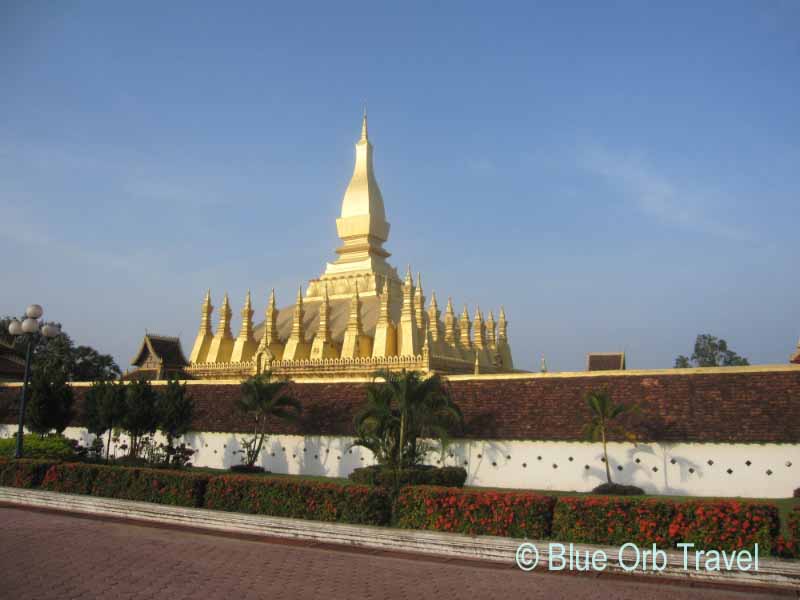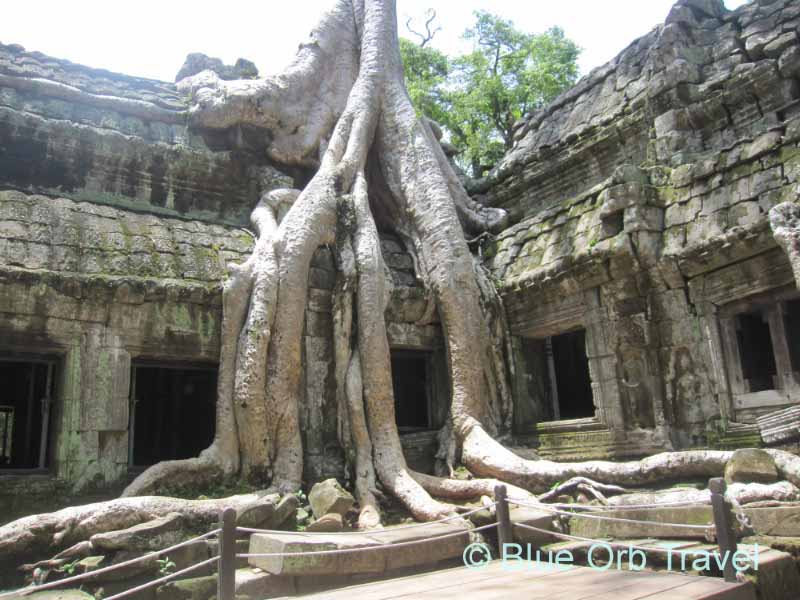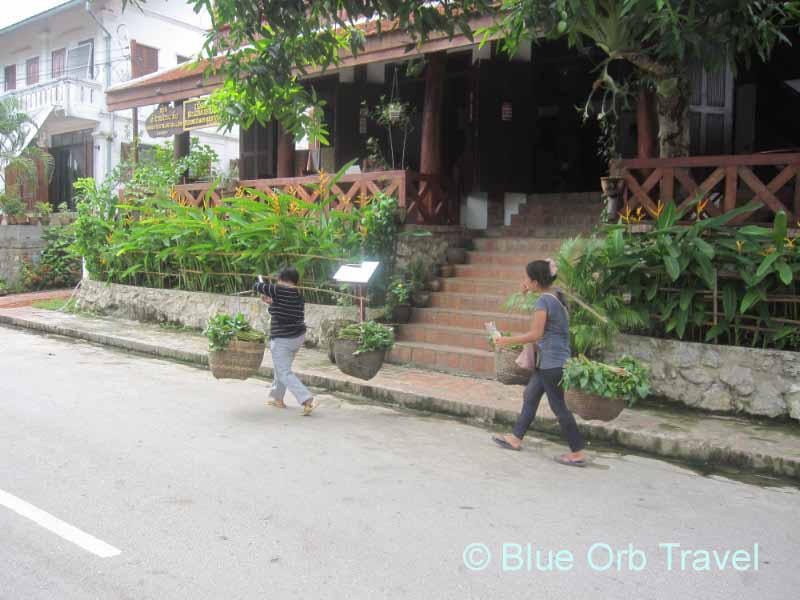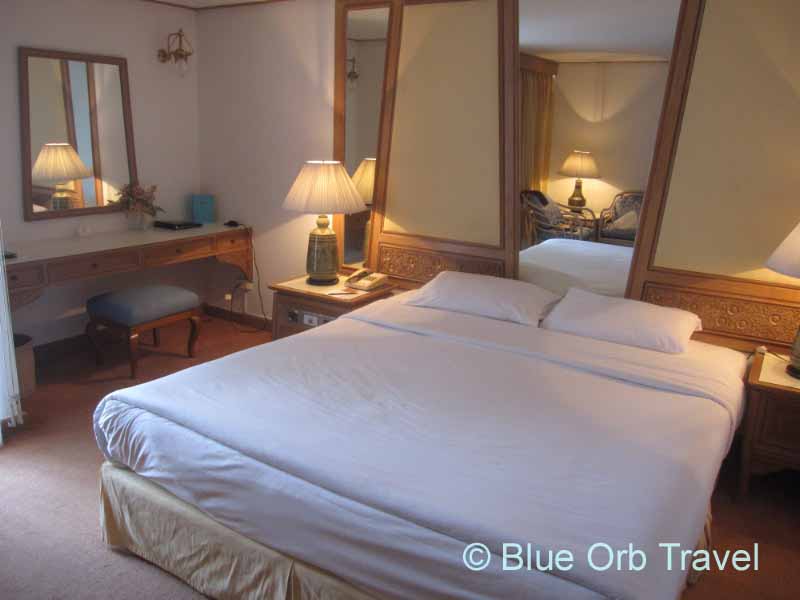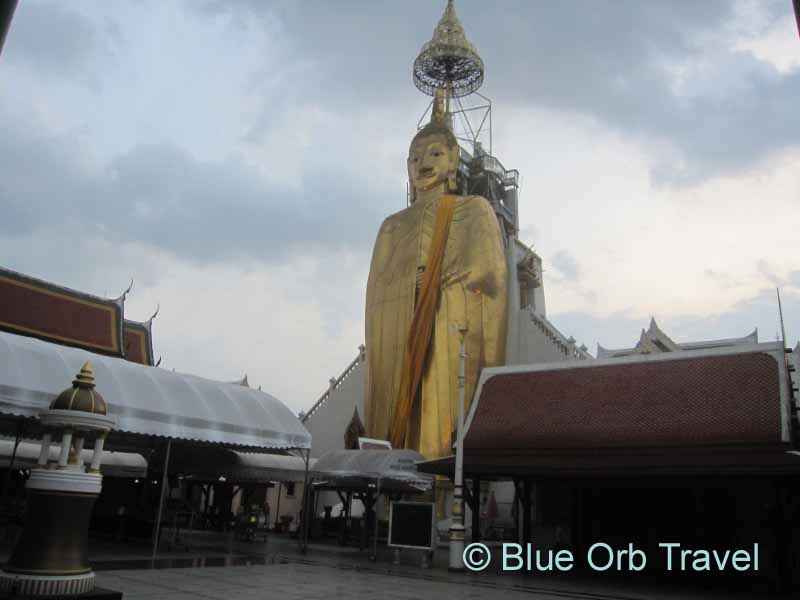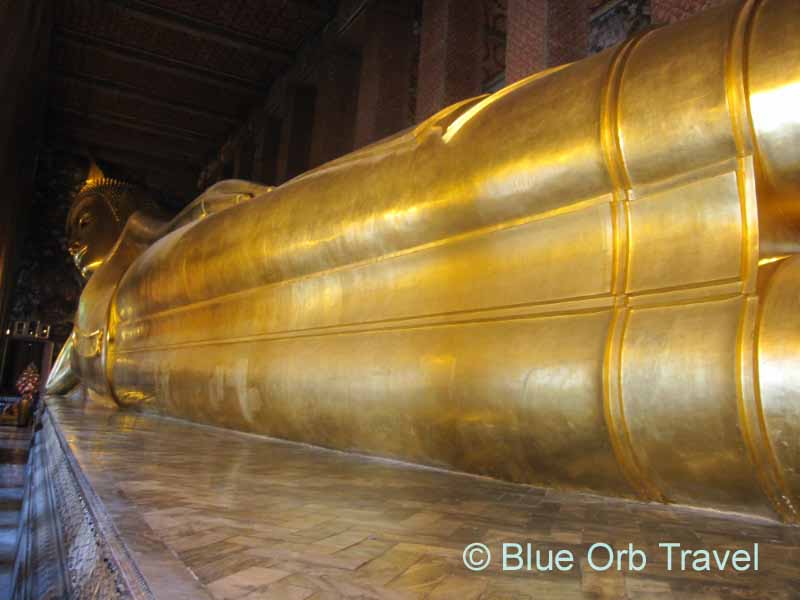Luang Prabang, Laos
Luang Prabang, Crown Jewel of Laos
Located at the confluence of the Nam Khan and Mekong Rivers in the hill country of northern Laos, Luang Prabang is arguably one of the most important tourist destinations in Southeast Asia. With its small, but modern airport this resort city can easily be reached from Vientiane, Hanoi, Bangkok and Siem Reap, but the adventurous traveler will want to arrive by bus from Vientiane. If you choose this route you will be rewarded with a ride through some incredibly beautiful country and will pass through the limestone studded sportsman’s paradise known as Vang Vieng.

After an 11 hour bus ride costing $22, I arrived in Luang Prabang at 8 PM to find the town still bustling with activity. Just a short walk from the bus station into the center of town, I easily found a nice hotel (for $15!–see below) and was surprised to find shops and travel agencies still open. After purchasing a $150 plane ticket to Hanoi, Vietnam on Lao Airlines for the following afternoon I walked around until I finally made the difficult choice of where to eat from among the many outstanding French style restaurants in town.

Resort Atmosphere
My first impression of Luang Prabang was that it was a quaint little resort town and that it had more visitors than I expected for being so far out in the hinterlands. That first evening I encountered as many young backpackers as I did well-heeled tourists out enjoying the pleasant weather and the French provincial setting. With few motor vehicles in the confines of town, the air was clean and fresh and there was a peaceful quiet that was soothing to a weary traveler. Designated as a UNESCO World Heritage Site, Luang Prabang has retained its timeless charm with a mixture of Buddhist temples and French colonial buildings which line the four main streets located within the confines created by the confluence of the Nam Khan tributary flowing into the mighty Mekong River.

In the Laotian language Luang Prabang literally means ‘royal Buddha image’. Its colorful history dates back many centuries and took it through numerous stages including periods where it was part of an independent kingdom, the subject of surrounding empires, a French protectorate and finally the communist country it has become today following the Pathet Lao takeover in 1975. With the subsequent introduction of capitalism in Laos, Luang Prabang, indeed all of Laos, has made an impressive comeback after many years of depredation and neglect.

A Walking Tour
The signature landmark of Luang Prabang is Mount Phousi, a steep hill which rises about 320 feet above the center of town. While there are temples located throughout the hill, the main attraction is Wat Chom Si with its golden stupa on the summit. For the admission price of $2.50 and a somewhat arduous climb of 350 steps to the top you get a spectacular 360 degree view of the town, rivers and surrounding countryside. Cat lovers, in particular, will not want to miss the hike up Mount Phousi, with lazy felines napping at every landing along the way!
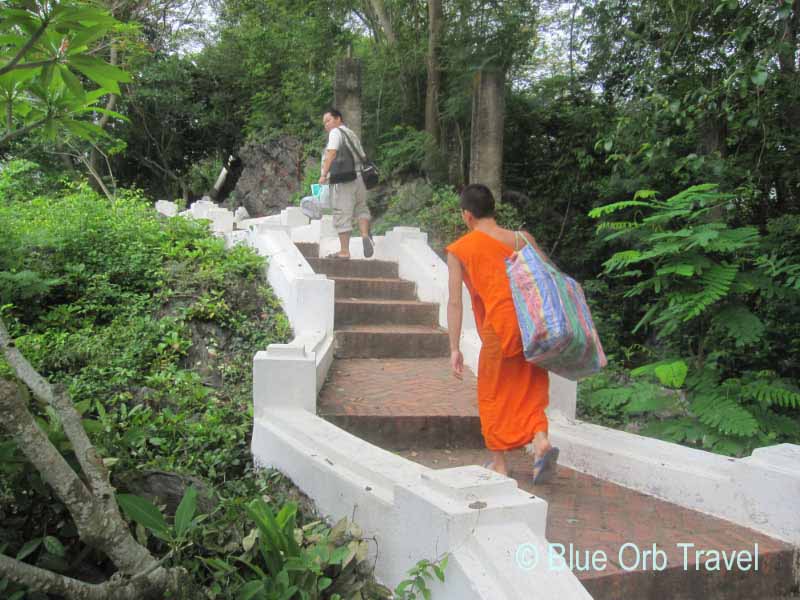
A walk through the main streets of Luang Prabang will take you past many of the beautifully preserved buildings from the French colonial period. Along the way you will see the Haw Kham Royal Palace built in 1904 which is now a museum and the nearby Wat Mai built in the 18th century, which is the largest temple in town. Other sights include Wat Wisunalat with its huge golden Buddha built in 1512 and Wat Xieng Thong near the confluence of the rivers. And if you are lucky you will have an opportunity to see the daily morning alms procession, where food is donated to the Buddhist monks clad in their brilliant orange robes. Your visit would not be complete without a walk down to the rivers to watch the fishermen and a walk across the Nam Khan River on the old wooden bridge.

Eating and Sleeping
It was a welcome problem to have so many small hotels and guest houses to choose from in Luang Prabang. The first one I walked into on the evening I arrived ended up being a winner and for $15 I got a nice big room with private bath in a quite section of the ThanaBoun Guest House. Located right on one of the main streets close to all the sights and restaurants, this small hotel is a great place to stay. It was clean and safe and the front desk staff members were friendly and helpful. An internet café is conveniently located in the lobby. And the price could not be beat. Southeast Asia is truly the budget traveler’s paradise!

For dinner I found a wonderful, open-air restaurant called The Pizza Luang Prabang right across the street from the guest house. It was located on the main floor of one of the quaint, old colonial buildings and the atmosphere on that balmy evening could not have been more pleasant. For $6.80 I had a delicious pizza and a Beerlao, which is a tasty beer based on locally grown jasmine rice. Many an evening since I visited Luang Prabang I have wished that I could magically transport myself back so that I can try every one of the fabulous restaurants to be found there. This wonderful little town is worth the extra effort it takes to get there and you will not want to miss it on your trip through Southeast Asia.

Luang Prabang, Laos Read More »






















